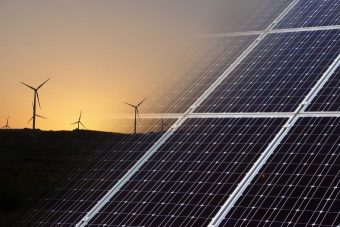
Last year the world’s governments finally got their act together on climate change, agreeing to limit global warming to well under two degrees. To meet this commitment, we need a rapid global transition to net zero greenhouse gas emissions. The fossil fuel age is over.
The new era, powered by renewable energy, will be swept in on a massive wave of investment. According to Beyond Zero Emissions’ report, Renewable Energy Superpower, the world will invest $US28tn in renewable energy and energy efficiency in the next 20 years.
But Western Australia risks being left behind. Here investors have poured more than $100bn into liquefied natural gas (LNG) over the past decade yet the state has little to show for it. Another $60bn is slated for LNG development, but with current low gas prices, the sense of that investment is questionable. Energy consumers fork out for coal-fired power that goes unused and endure endless debate about grid privatisation. Meanwhile Western Australia’s electricity-related emissions are rising, just as almost all other states are managing to reduce them.
The irony is that Western Australia should welcome the dawn of the renewable energy era. The state’s enormous resources of sunshine, wind and wave mean it could become a renewable energy superpower of the future. Our report shows how Australia’s world-beating renewable energy resources represent a huge economic opportunity. Incredibly the report shows that in Western Australia alone, there is enough wind and solar, available at competitive prices, to provide almost 9% of the world’s energy every year. In other words Western Australia has more renewable energy than fossil energy.
There are in fact signs of life in Western Australia. For example, Perth start-upPower Ledger is trialling software enabling neighbours to trade energy between homes – an Australian first. And Carnegie Wave Energy is conducting one of the world’s most successful wave energy projects, generating power for the naval base on Garden Island. Carnegie has recently won funding from the Australian Renewable Energy Agency (Arena) to help develop its CETO wave energy technology which could attract interest from around the world.
Opportunities in the renewable energy era extend beyond the energy sector. In a low carbon world, a cheap and plentiful supply of renewable energy will attract energy-intensive industries. With its abundant mineral resources, Western Australia could become the world-centre for zero carbon metals like steel and aluminium.
What can Western Australia do to seize this opportunity? Firstly, like the ACT, the government needs to set a target of 100% renewable electricity. Such a target will attract investment and stimulate development of local technologies that could be sold to the rest of the world. Secondly, the government should set up an innovation fund for the development and commercialisation of new energy solutions. With Arena’s funding slashed, it is vital that the Carnegies of the future are not thwarted by lack of investment.
The government should also call a halt to the expansion of the gas distribution network. There’s nothing gas does for us that electricity can’t do more efficiently. Government and business should work together to encourage the uptake of high-efficiency electric appliances such as hot water heat pumps. At the same time, electric transport should be promoted. BZE has shown that a complete transition to electric cars in 10 years is affordable, and would reduce dependence on foreign oil.
The reward for this type of forward-looking policy would be investment, jobs and a head-start in renewable energy era. Nature has given Western Australia all it needs to ride this wave. Now it just needs the vision.
Source: theguardian.com
